Kitchen Cleaning is another feat we encounter everytime we do a general home cleaning routine. Here are some tips on how to do a better kitchen cleaning.
Rise, Re-enter and Recover: CMDA Cleaning Services COVID-19 Story
Rise, Re-enter and Recover: CMDA Cleaning Services COVID-19 Story
 At the start of the pandemic
At the start of the pandemic
At the advent of the COVID-19 pandemic here in the Philippines and the implementation of Enhanced Community Quarantine, a lot of companies are worried about business and how to go about doing transactions in what would be the new norm of, not just the Philippine society, but the whole world. Aside from the economic impact, there is a health risk posing against all – rich or poor, employee or employer, a small business owner or a mega corporation.
Thankfully, the full brunt of these fears and implications did not totally impact our company (though still affected with the decrease in inquiries and sales). There were measures already in place for something like this prior to the crisis, however, not meant for this length of time:
- Emergency Savings Fund
- SOP for Human Resource coordinator
When news arrived that the Enhance Community Quarantine was to be imposed in the entire nation, internal measures were arranged:
- “Work from Home” set up for administrators
- “Stand-by for transport” for custodians
- Provided full salary at the end of March
- Provided pro-rated 13th month pay plus cash assistance on April 15th payroll
- Provided comprehensive Salary loan on the start of May
- All health monitoring was based through communications via sms and chat
Need something cleaned?
 The financial assistance from concerned government agencies haven’t arrived yet as of this posting, but the company knew that compassion is also part of growing a business, especially in a service industry that relies on manpower. Thankfully, the government released some memorandum that enables CMDA Cleaning Services to do a unique and rising type of service – Disinfection. Our Disinfection officers were still able to work but operates on special and strict guidelines:
The financial assistance from concerned government agencies haven’t arrived yet as of this posting, but the company knew that compassion is also part of growing a business, especially in a service industry that relies on manpower. Thankfully, the government released some memorandum that enables CMDA Cleaning Services to do a unique and rising type of service – Disinfection. Our Disinfection officers were still able to work but operates on special and strict guidelines:
- Wear Personal Protective Equipment (PPE), gloves, masks and face shield (provided by CMDA)
- Operate and transport 1:1 disinfection officer to vehicle
ECQ to MECQ
At the beginning of May, thankfully, government agencies has relaxed some measures to recover the economy, and so we slowly restored our other services like office cleaning and home sanitation. However, certain guidelines were needed to follow and so we used appropriate and recommended measures to slowly return to work: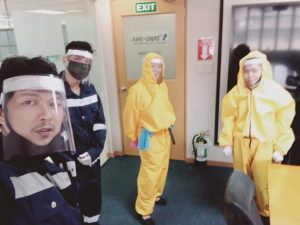
- We picked up each employee from their homes to staff house
- The company provided board and lodging for employees through a rented unit near the office (one for male employees, one for female employees)
- Provided a dedicated transport vehicle when servicing clients to avoid contamination
- Imposing strict health measures such as always wearing face masks and observing proper physical distancing
- Provided vitamins and ensuring they get 6-8 hours of sleep
- Direct approach of health monitoring by visually and directly checking for symptoms by the health officer
- Provided PPEs for each custodian to protect them and the clients every time there are projects
- Comprehensive training and seminar on our company’s recovery plan to identify the role of each team member
- Testings will be done twice a month on all CMDA employees to ensure their safety considering the line of work we do
Prior to the pandemic, safety of everyone has always been the company’s top priority, and it has emphasized it more now by further augmenting it with the additional protocols placed in our Standard Operating Procedures. With the government slowly modifying the community quarantine guidelines on each regions, CMDA Cleaning Services will surely be there to help everyone to rise and recover through a cleaner and safer place. As a start, we offer our recovery plan template on all companies that we are in partnership with to help them kick start their back to work program and place a robust health protocol for all of their employees.
GCQ and the “New Normal”
Finally on June 01, 2020, the government has declared that the National Capital Region be placed on General Community Quarantine (GCQ). Althought we have been operating already at a limited capacity, this gave our clients more flexibility in terms of getting our services before they resume back to office. Since the pandemic has affected life and business, our services has been in demand for the “new normal” as more and more require disinfection.
Though not mandated by the Department of Trade and Industry (DTI), Department of Health (DoH), nor the Department of Labor and Employment (DOLE), we opted to test all our staff for the Rapid Anti-Body COVID-19 test, and last June 12, 2020, we all had our test made and thankfully, from the transport team, to the custodians and up to our admin team are all COVID-19 NEGATIVE. This gave us, including our families, especially our clients, peace of mind. We know we can always be true to our virtue on “providing a clean and safe place for everyone”.
Back to MECQ and the fight for COVID-19 goes on
As the metro and surrounding provinces return back to MECQ, we have already gone through our 3rd monthly Rapid Anti-Body COVID-19 test for all our employees. Knowing that we are all still negative for covid, it goes to show that our safety measures are working, but still, we remain vigilant and continue our efforts in ensuring we, and our clients are free from infection. We have had a lot of occassions as well that we have come to rescue our clients from their cancelled cleaning service because our competitors were limited and challenged by the MECQ guidelines. Our training has always involved quick response to our customers, with safety as the priority, to make sure their place is clean and disinfected immediately.
COVID-19 Check Up and Test Results
First Posted on: May 16, 2020
Updated: August 15 2020
More Related cleaning tips below:
Home Kitchen Cleaning
The Ultimate Office Cleaning Checklist
Get your free printable Office Cleaning Checklist today and optimize your office housekeeping in no time! Photos and step by step guide included.
DIY: Clorox Disinfecting Wipes
Step by step guide on how to make your own Clorox Disinfecting Wipes. No need to worry when they will be available again at the grocery shelf.

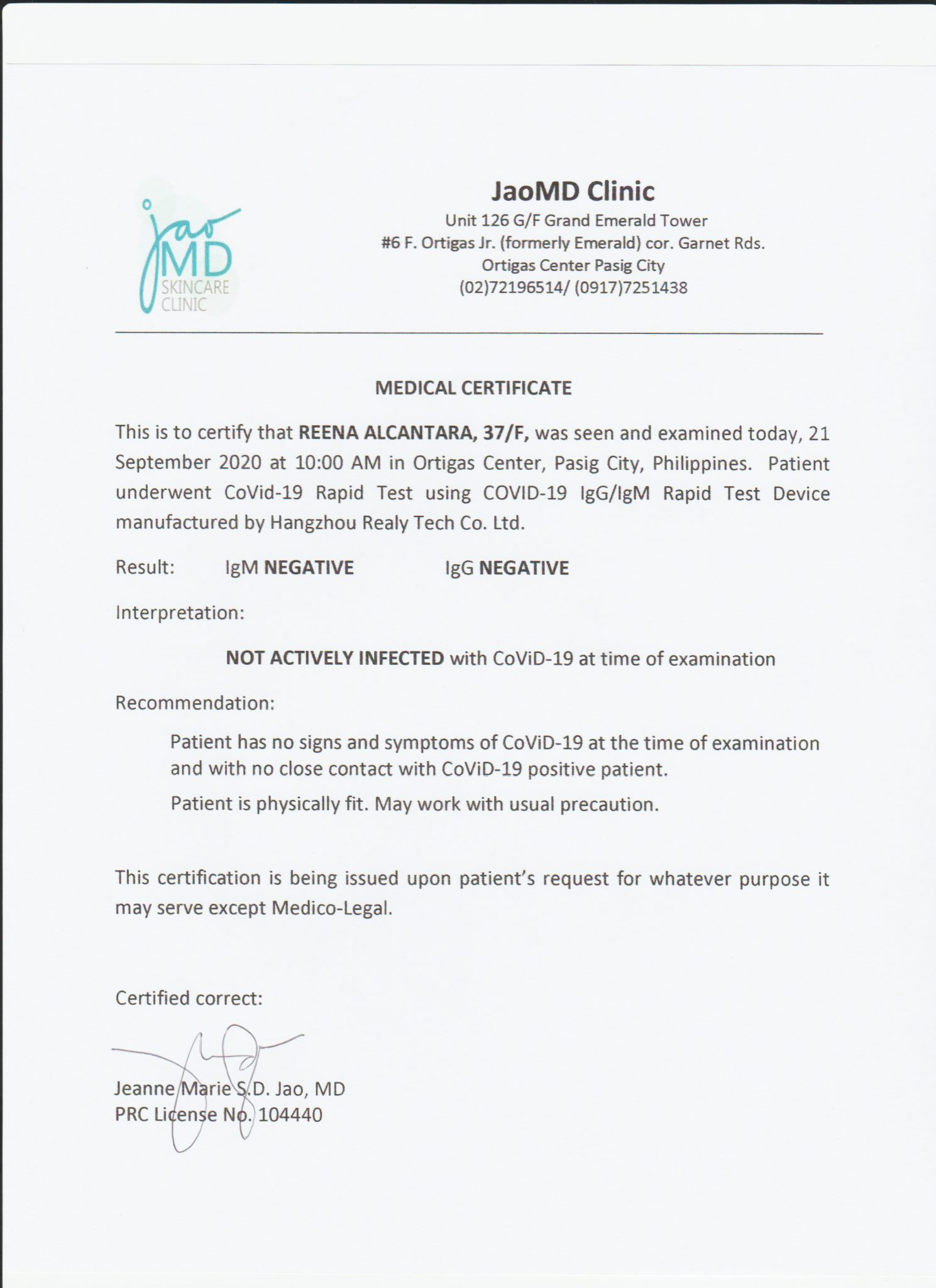
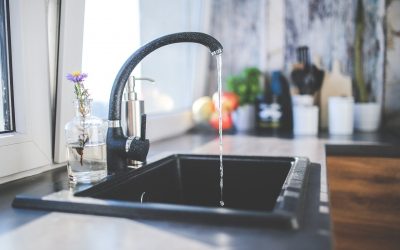

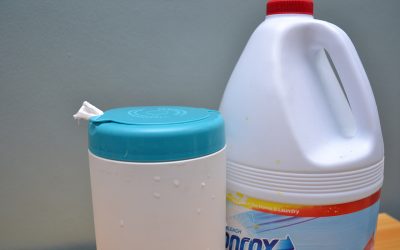
 This is a process wherein you use a washcloth/mop damped with disinfectant (dilluted or concentrated) on surfaces. You can do this after a general or deep cleaning of your office, or at the same time during that process. If you have the manpower, this is the most economical, since disinfectants and chlorine based liquids are available almost anywhere.
Type of Office:
This is a process wherein you use a washcloth/mop damped with disinfectant (dilluted or concentrated) on surfaces. You can do this after a general or deep cleaning of your office, or at the same time during that process. If you have the manpower, this is the most economical, since disinfectants and chlorine based liquids are available almost anywhere.
Type of Office:
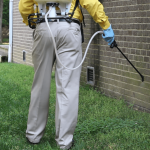 As the name implies, a mechanical or electric spray is used in the this process. The objective of this process is to disperse the liquid disinfectant on surfaces. The action and effectivity of disinfection depends highly on the disinfectant used. With the tool or machine, it can reach more areas as compared to doing a pat down/wipe down disinfection, however, the end result – wet surfaces. Wiping down the disinfectant would mean less effect on killing bacteria and viruses, so you have to wait until it dries up. This is not good on carpets as it might give out a nasty smell after a few days. It may also affect office computers and outlets.
Type of Office:
As the name implies, a mechanical or electric spray is used in the this process. The objective of this process is to disperse the liquid disinfectant on surfaces. The action and effectivity of disinfection depends highly on the disinfectant used. With the tool or machine, it can reach more areas as compared to doing a pat down/wipe down disinfection, however, the end result – wet surfaces. Wiping down the disinfectant would mean less effect on killing bacteria and viruses, so you have to wait until it dries up. This is not good on carpets as it might give out a nasty smell after a few days. It may also affect office computers and outlets.
Type of Office:
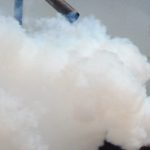 This type of disinfection is unique compared to the rest, as it utilizes fog or fumes instead of liquid or aerosol. The process involve heating oil or water based disinfectants to disperse it as fog or fume, effectively dispersing it on more surface area. When using the correct disinfecting liquid solution that is manufactured for this type of equipment, you can achieve a good disinfection, however, the process may trigger the smoke alarm (due to the fog/fumes). The fumes are also in the area for an hour or more, so it would be impossible to use the area after the process. The fumes can also cause respiratory illnesses that affects humans, animals and plants.
Type of Office:
This type of disinfection is unique compared to the rest, as it utilizes fog or fumes instead of liquid or aerosol. The process involve heating oil or water based disinfectants to disperse it as fog or fume, effectively dispersing it on more surface area. When using the correct disinfecting liquid solution that is manufactured for this type of equipment, you can achieve a good disinfection, however, the process may trigger the smoke alarm (due to the fog/fumes). The fumes are also in the area for an hour or more, so it would be impossible to use the area after the process. The fumes can also cause respiratory illnesses that affects humans, animals and plants.
Type of Office:
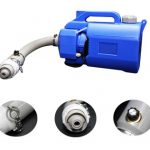 This type of disinfection process utilizes a special machine that delivers the liquid disinfectant into microdroplets upon release. It’s almost similar with the spray disinfection but you get a less wet and less moist outcome. It does this by letting the liquid pass through a controlled airflow or blower (instead of pressurizing it or heating it) which results in microdroplet dispersal. It does not affect the quality of the disinfectant and it can reach a lot of surface area as well.
Type of Office:
This type of disinfection process utilizes a special machine that delivers the liquid disinfectant into microdroplets upon release. It’s almost similar with the spray disinfection but you get a less wet and less moist outcome. It does this by letting the liquid pass through a controlled airflow or blower (instead of pressurizing it or heating it) which results in microdroplet dispersal. It does not affect the quality of the disinfectant and it can reach a lot of surface area as well.
Type of Office:
 This is a specialized or evolved form of the cold fogger and perhaps the most effective and efficient way of disinfecting your office. The process involves charging/ionizing the microdroplets – magnetizing it with a similar charge so that it repels each other giving a better diffusion (scatters in spaces better), at the same time, it attracts bacteria and viruses. Because the microdroplet are greatly charged, it sticks to walls and surfaces, so what you have is the disinfectant, the bacteria and virus, all glued hard to the wall or surface, and still with enough charge to attract more bacteria and virus to the disinfectant. That is a total disinfection technology that is now available to us all.
Type of Office:
This is a specialized or evolved form of the cold fogger and perhaps the most effective and efficient way of disinfecting your office. The process involves charging/ionizing the microdroplets – magnetizing it with a similar charge so that it repels each other giving a better diffusion (scatters in spaces better), at the same time, it attracts bacteria and viruses. Because the microdroplet are greatly charged, it sticks to walls and surfaces, so what you have is the disinfectant, the bacteria and virus, all glued hard to the wall or surface, and still with enough charge to attract more bacteria and virus to the disinfectant. That is a total disinfection technology that is now available to us all.
Type of Office:
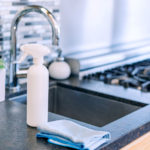 Almost every household have a bottle of Clorox under their kitchen sink, and some uses liquid or powdered chlorine for cleaning homes and pools. In it’s purest form, it is a very good chemical disinfectant, so following the proper water to chlorine ratio should be considered. Most experts and professionals advise that a 1:100 dilution is already okay to kill bacteria and viruses without doing harm to you. That’s 5mL or a spoonful of Cholorox on a 500mL water bottle. You can wipe down almost all surfaces (except surfaces of plates and utensils to avoid ingestion) and you can spray it around your home and garden. The only downside using this is the odor that it leaves. Some prefer the odor but most find it offensive, and not to mention that Chlorine is a mild to medium irritant depending on the concentration.
Almost every household have a bottle of Clorox under their kitchen sink, and some uses liquid or powdered chlorine for cleaning homes and pools. In it’s purest form, it is a very good chemical disinfectant, so following the proper water to chlorine ratio should be considered. Most experts and professionals advise that a 1:100 dilution is already okay to kill bacteria and viruses without doing harm to you. That’s 5mL or a spoonful of Cholorox on a 500mL water bottle. You can wipe down almost all surfaces (except surfaces of plates and utensils to avoid ingestion) and you can spray it around your home and garden. The only downside using this is the odor that it leaves. Some prefer the odor but most find it offensive, and not to mention that Chlorine is a mild to medium irritant depending on the concentration. This is also a very common household item that can be easily used to disinfect surfaces. Be it 30% or 70%, Isopropyl or Ethyl, as long as it is not the ones you use as beverage, then you can definitely use it. Smell-wise, this is much more appealing compared to chlorine, and definitely less irritating on the skin. But for those who are cleaning mavericks out there, never combine alcohol and chlorine as it will create a poisonous gas that is nearly lethal to humans and animals. The downside of using alcohol is its cost and volatility (dries up fast and may catch fire). You can use too much of it if you are running on a budget, and you can’t simply spray it around the house as it dries up fast. Not to mention how it affects certain surfaces like varnished wood and laminated floors and walls.
This is also a very common household item that can be easily used to disinfect surfaces. Be it 30% or 70%, Isopropyl or Ethyl, as long as it is not the ones you use as beverage, then you can definitely use it. Smell-wise, this is much more appealing compared to chlorine, and definitely less irritating on the skin. But for those who are cleaning mavericks out there, never combine alcohol and chlorine as it will create a poisonous gas that is nearly lethal to humans and animals. The downside of using alcohol is its cost and volatility (dries up fast and may catch fire). You can use too much of it if you are running on a budget, and you can’t simply spray it around the house as it dries up fast. Not to mention how it affects certain surfaces like varnished wood and laminated floors and walls.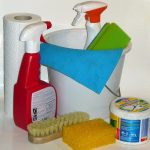 An occassional household that some of us use, liquid disinfectants (commercial names like Lysol or PineSol) are also good in cleaning your homes and offices. Most liquid disinfectants use Benzalkonium Chloride as an active ingredient, one of the things that most hospitals look for when looking for a good disinfectant. Similar to Chlorine, there are recommended dilution for each type of liquid disinfectant to economically clean your place. After mixing the concentrated form with water, you could use it to wipe or mop surfaces. Some brands also come in spray bottles but this may come out more expensive than your regular concentrated version when it comes to using it. Commercial liquid disinfectants are as effective as chlorine and much better smelling, however, it may cost you more.
An occassional household that some of us use, liquid disinfectants (commercial names like Lysol or PineSol) are also good in cleaning your homes and offices. Most liquid disinfectants use Benzalkonium Chloride as an active ingredient, one of the things that most hospitals look for when looking for a good disinfectant. Similar to Chlorine, there are recommended dilution for each type of liquid disinfectant to economically clean your place. After mixing the concentrated form with water, you could use it to wipe or mop surfaces. Some brands also come in spray bottles but this may come out more expensive than your regular concentrated version when it comes to using it. Commercial liquid disinfectants are as effective as chlorine and much better smelling, however, it may cost you more.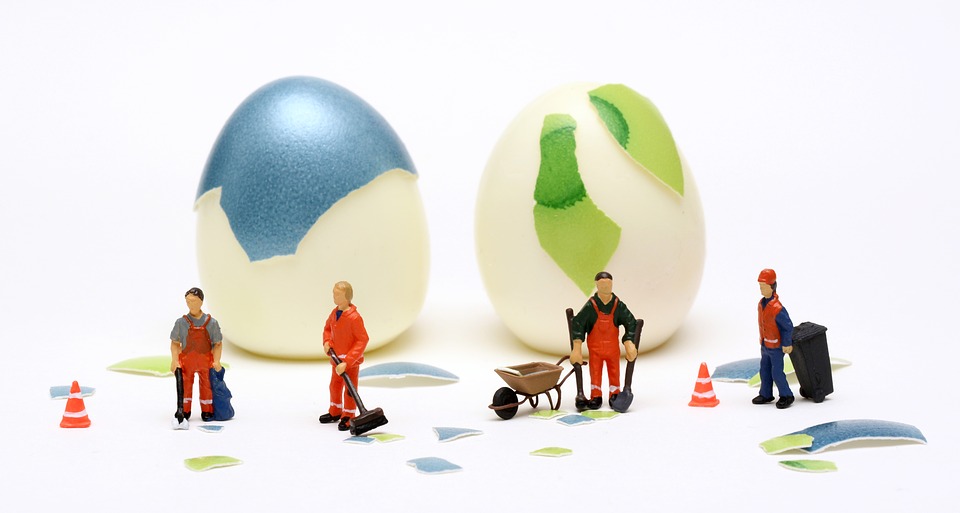
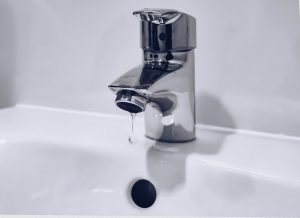 Those droplets and circular stains that you are mentioning are called “Hard Water Stains”, and are caused by the tap water that comes out of our faucet. Unfortunately, all our water supply provider delivers hard water through our pipelines. Hard water contains small amounts of metals and minerals, which when they accumulate and dry up, would cause those hard to remove stains. Simply put, regardless of what commercial cleaning solution you use, as long as you rinse using hard water, those marks will always appear. An immediate solution to this would be cleaning with the same cleaning solutions, soak it for 15 minutes, but rinsing with distilled water. On your next
Those droplets and circular stains that you are mentioning are called “Hard Water Stains”, and are caused by the tap water that comes out of our faucet. Unfortunately, all our water supply provider delivers hard water through our pipelines. Hard water contains small amounts of metals and minerals, which when they accumulate and dry up, would cause those hard to remove stains. Simply put, regardless of what commercial cleaning solution you use, as long as you rinse using hard water, those marks will always appear. An immediate solution to this would be cleaning with the same cleaning solutions, soak it for 15 minutes, but rinsing with distilled water. On your next 